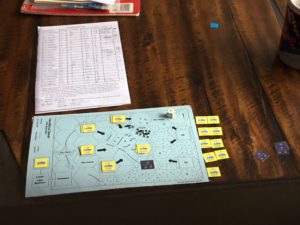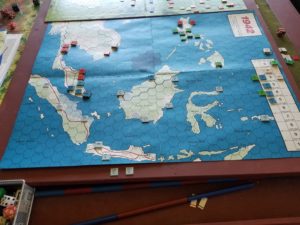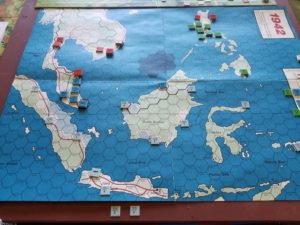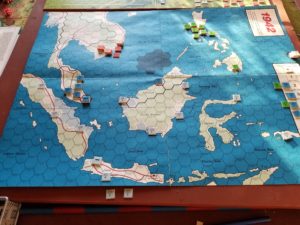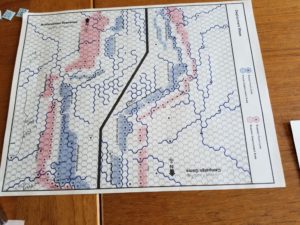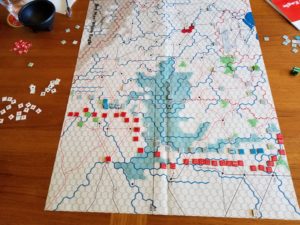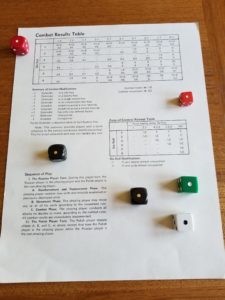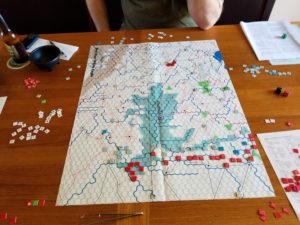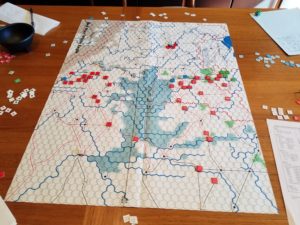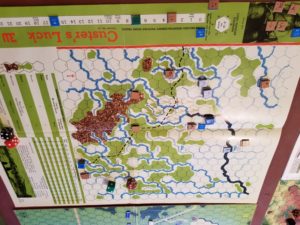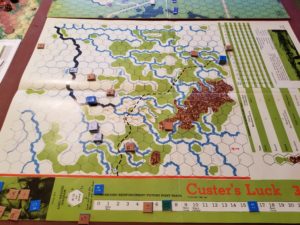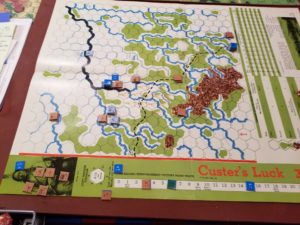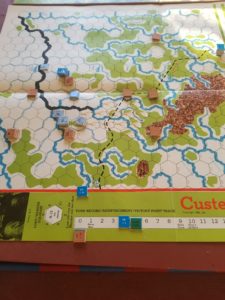Felt rather bloody minded yesterday, so I set up Cold Harbor II. This is the folio update of a game originally published in Panzerschrek magazine.
Just like the real battle, the Union attack has little chance of success. The game mechanics are simple, but simulate the entrenched Confederates’ devastating cannon and rifle fire. Each turn, the attackers are subjected to separate cannon and rifle attacks before they even have a chance to move. There are no step losses. Units are straight eliminated. Yikes! Movement rates are slow, and can be slowed even more by random events.
To win, the Union troops have to capture just one of the designated entrenchment hexes. The problem is getting there, and if they get lucky, holding it during an (almost) inevitable counterattack.
The big variable in the game is the Confederate artillery. There are a number of “dummy” cannon counters. The real and dummy counters are pooled face down, and then randomly selected and one each is placed in an entrenchment hex. If, for some reason, one section of the line has a few dummy counters, then the Union has a chance. If not……..My try didn’t even make it to the entrenchment.
Here’s a photo of the map and initial setup. Rhonda did a great job of coloring the black and white map that came with the game.
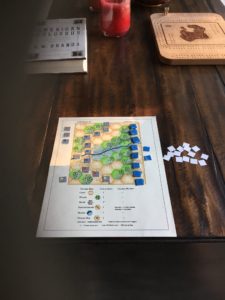
Will I play this again in the near future? No. Sometime? Probably when I get in that bloody minded mood again.
